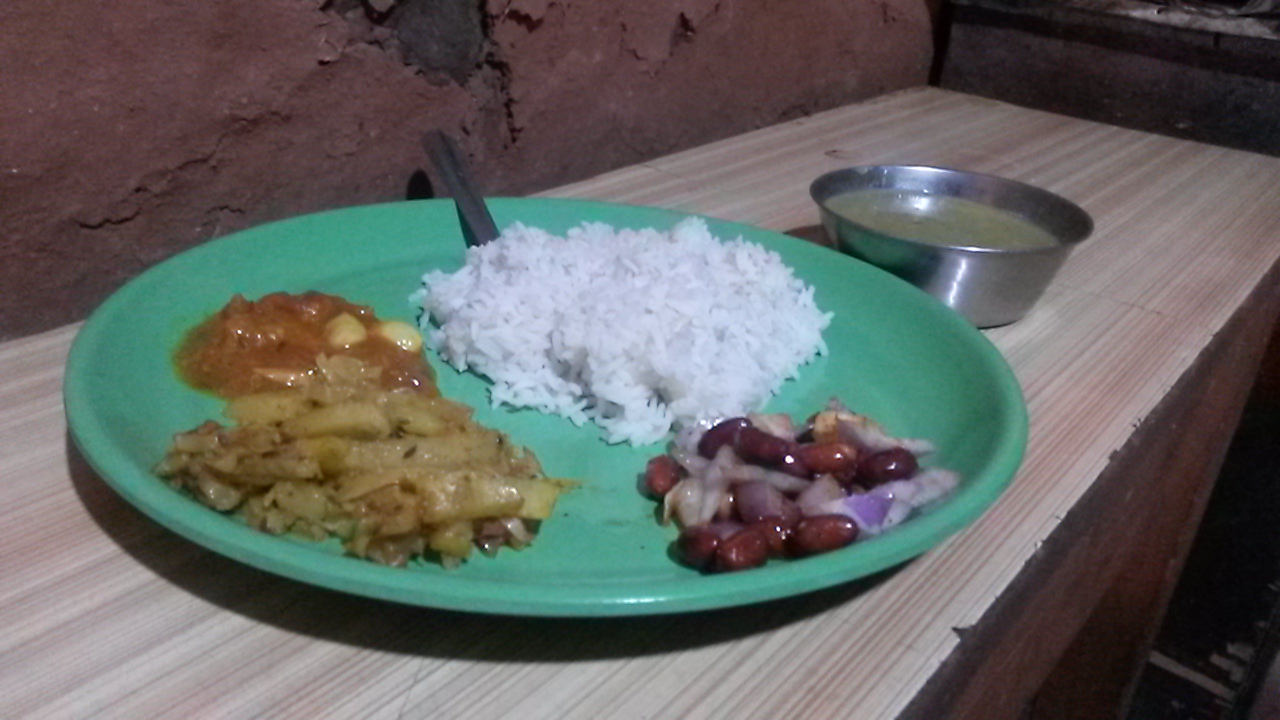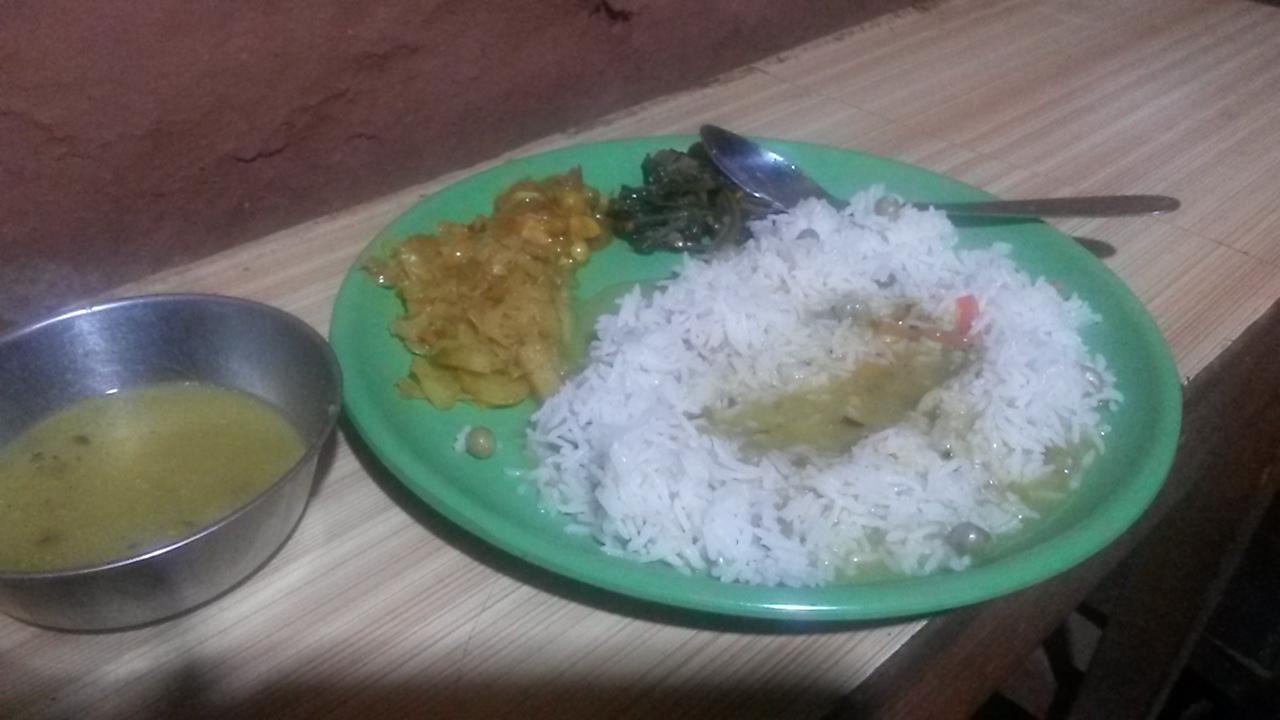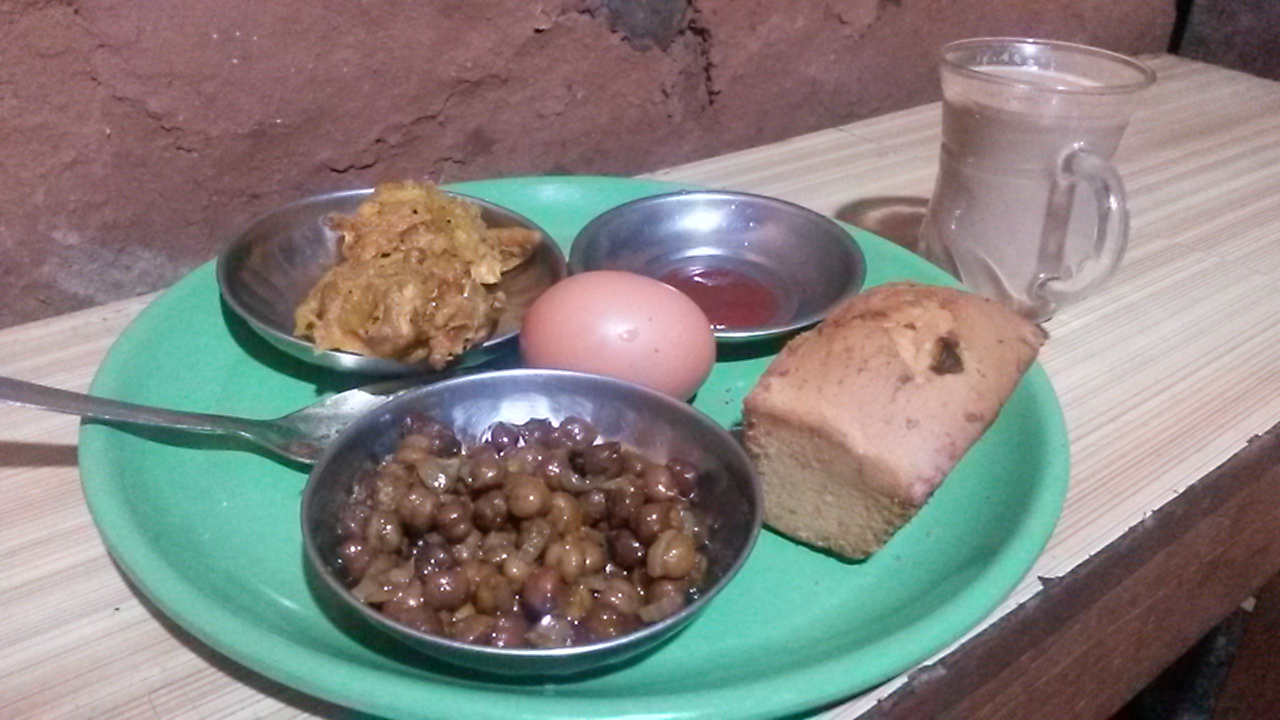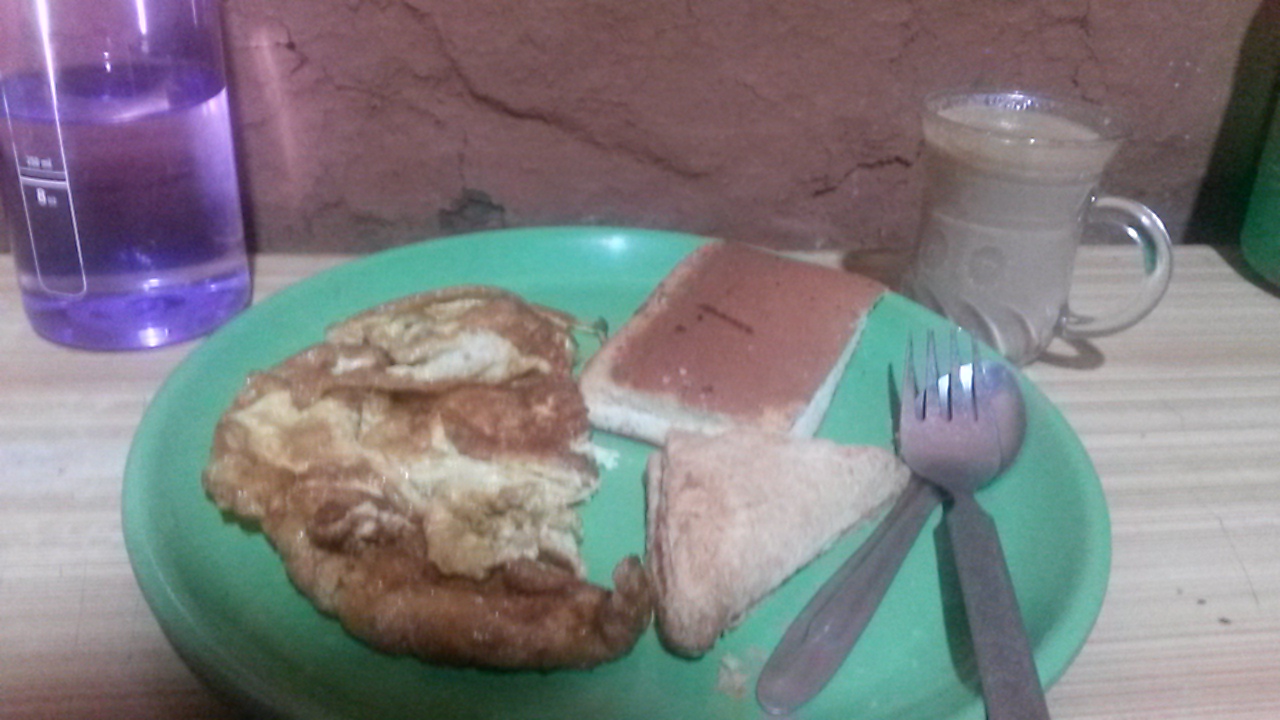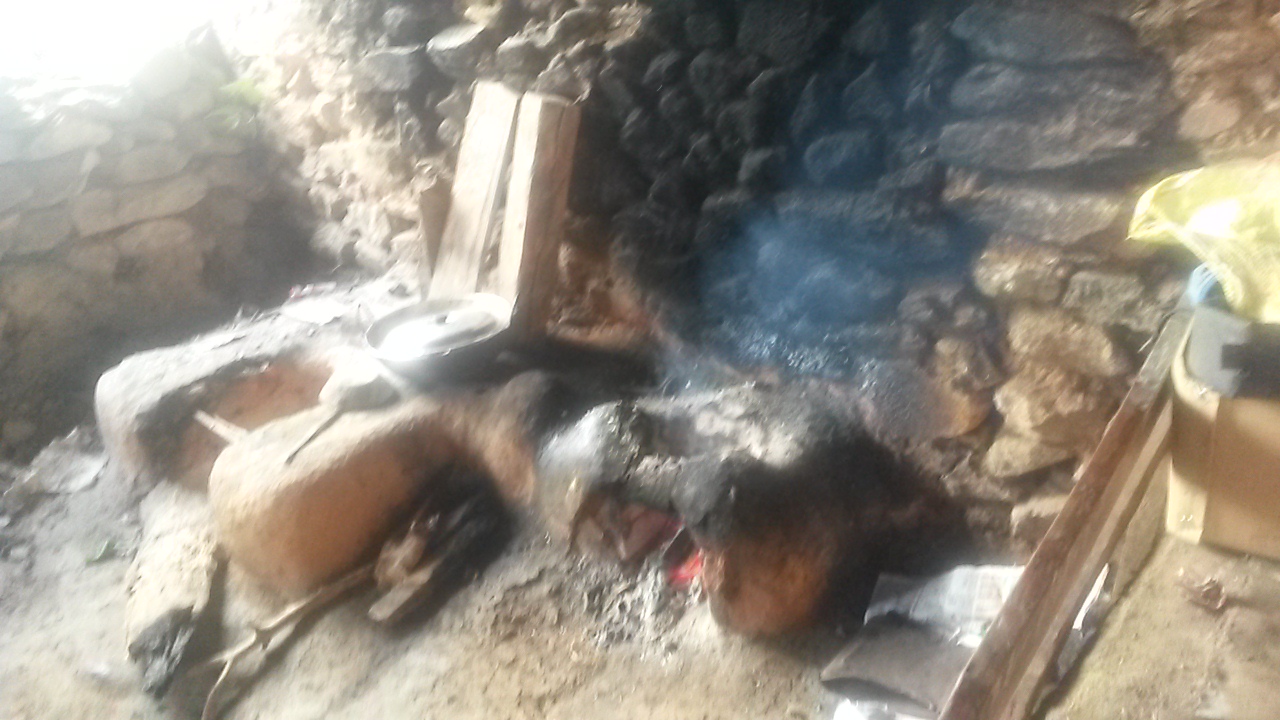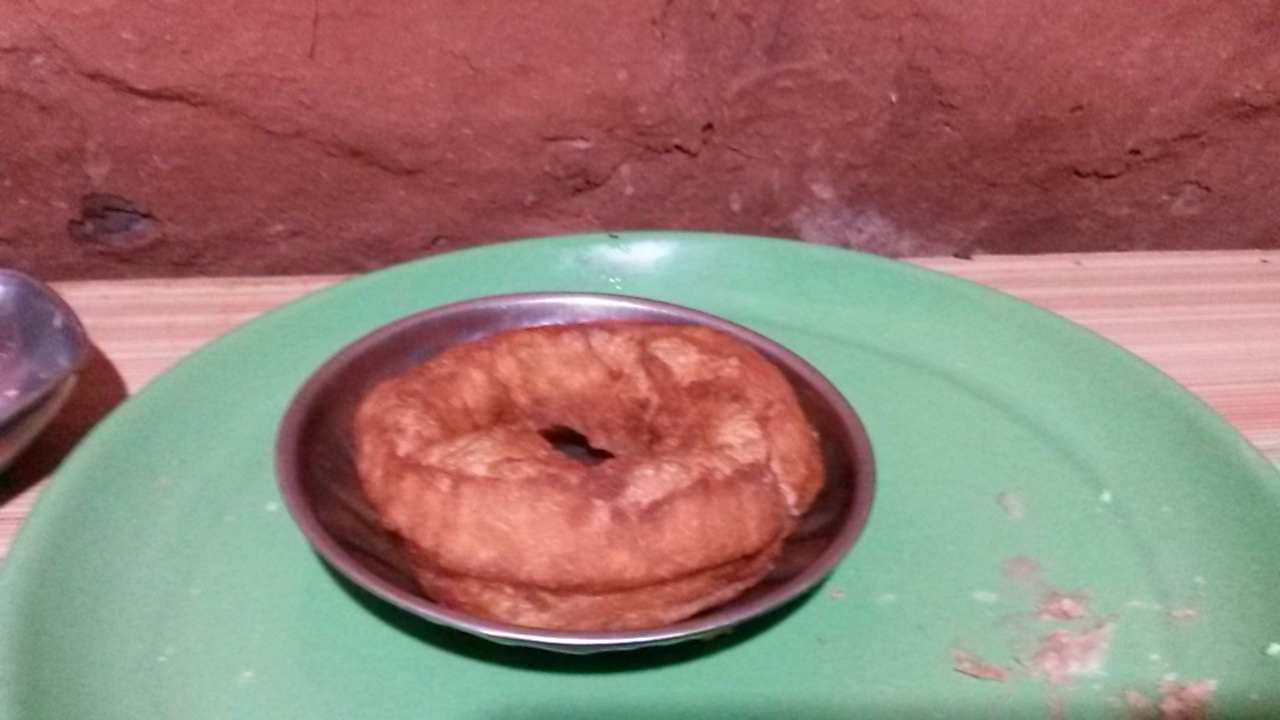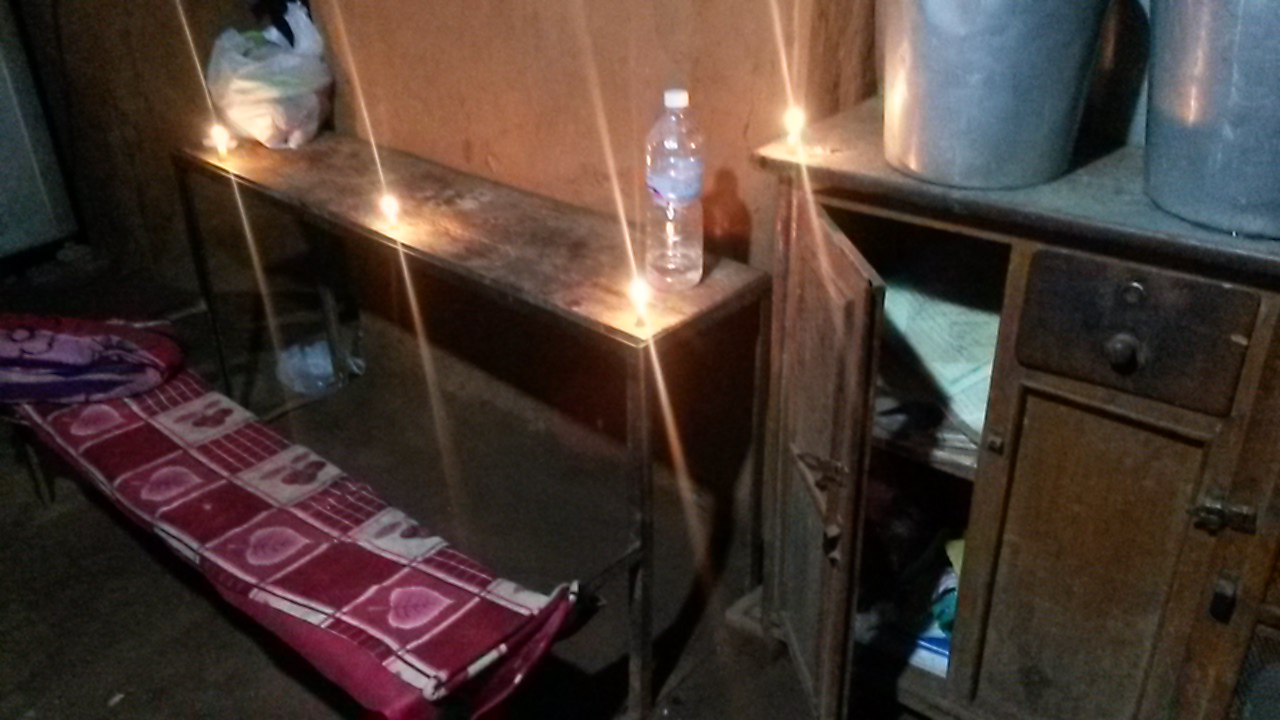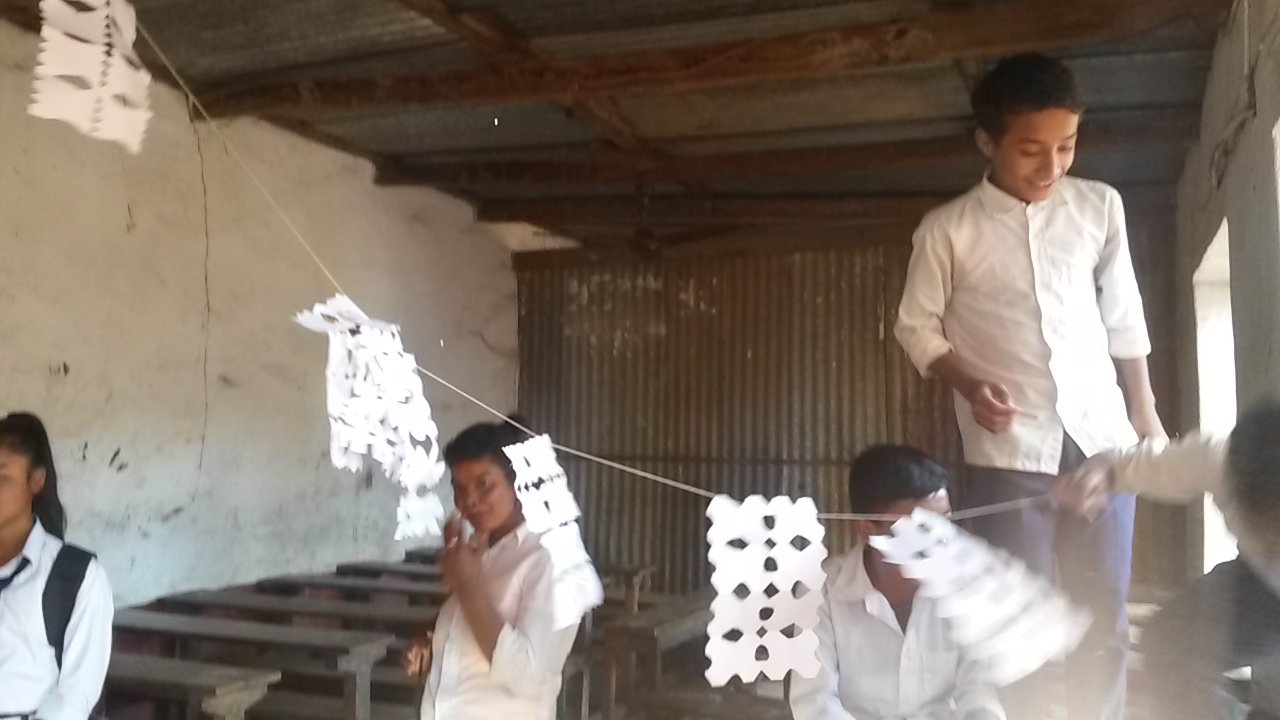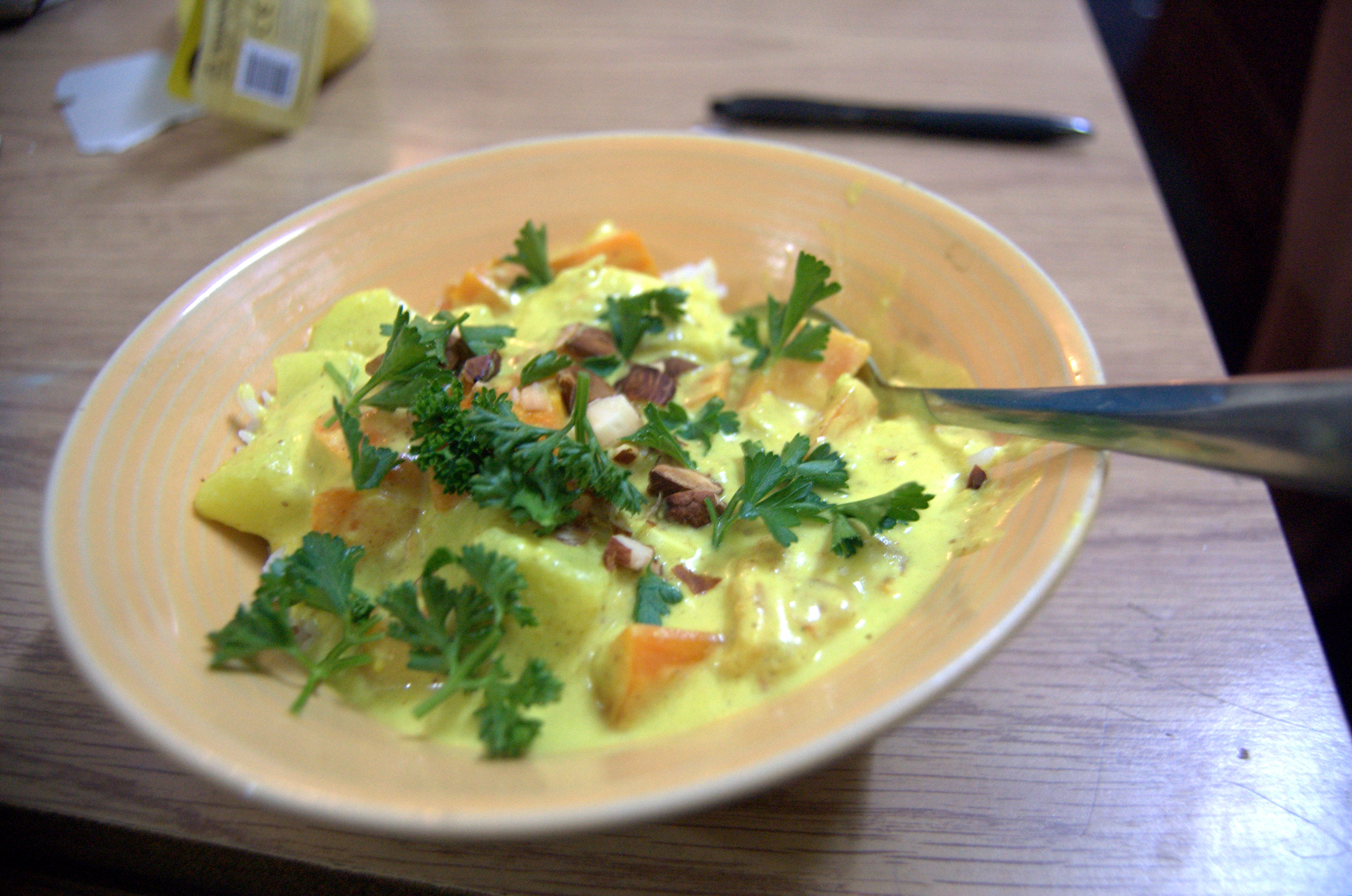“Have you eaten rice yet?” is the most common greeting in Nepal. Food is a huge part of the culture. Ironically, today is the day when women abstain from food and drink in hopes of blessing their husbands with long lives, so I have not eaten rice today.
Nepalis eat the same meal twice a day, every day. The first meal is usually eaten at 10am and the second meal is taken at 8pm. One point of frustration for everyone is the very common question, “what meal do Americans eat?” I try to explain that we don’t have a national meal; every mealtime we eat something different, and I can tell they don’t understand, just like most Americans can’t comprehend eating the same meal for their entire lives.
The meal is called Dal Bhaat, or rice with lentils. The dish is as varied as there are cooks in Nepal, but it usually has white rice, a mixture of black, orange, and green lentils stew, curried vegetables, and a spicy sauce.
- Dal Bhaat
My host mother apparently was told that Americans eat a ton of food, because I certainly get treated with constant food. When I first arrived, she was trying to give me six full meals a day! Luckily, I’ve gotten that down to four. While everyone else is simply drinking tea for breakfast, I get served a hard-boiled egg, a mini-cake, beaten rice, fried shredded veggies, and spicy chickpeas, served along with the buffalo-milk tea. Most people only have a small bowl of chickpeas and potatoes for a snack at around 2pm, but I get another full meal. That meal looks a lot like breakfast, with an egg, some sort of cake-thing, and beaten rice.
- A typical breakfast
The food is cooked over a stone stove behind the house. Dal Baat takes usually an hour to prepare, and the rice is almost always cooked in a pressure cooker. It takes so long mainly because there is usually only one place to cook on the stove, so only one of the four dishes can be made at a time.
At night, when I’m back in my room unwinding, I eat fresh coconuts and the most delicious doughnuts I’ve ever had. They’re seriously amazing. A woman makes them out of a tiny rusted shack, and they taste like gooey pizza dough inside a perfectly fried crust.
I eat a lot of food, but many of my students face a very different reality. I would estimate 5-10% of my students show signs of malnutrition, with big protruding stomachs. Three of my students have said they attend all of my extracurriculars to distract them from their hunger at home.
I’ll leave you with a recipe for one of my favorite Nepali foods: peanut sadeko.
1. Lightly toast peanuts in pan
2. Mix with diced tomatoes, red onions, cilantro, garlic, and ginger
3. Sprinkle lime juice and salt
Enjoy!
